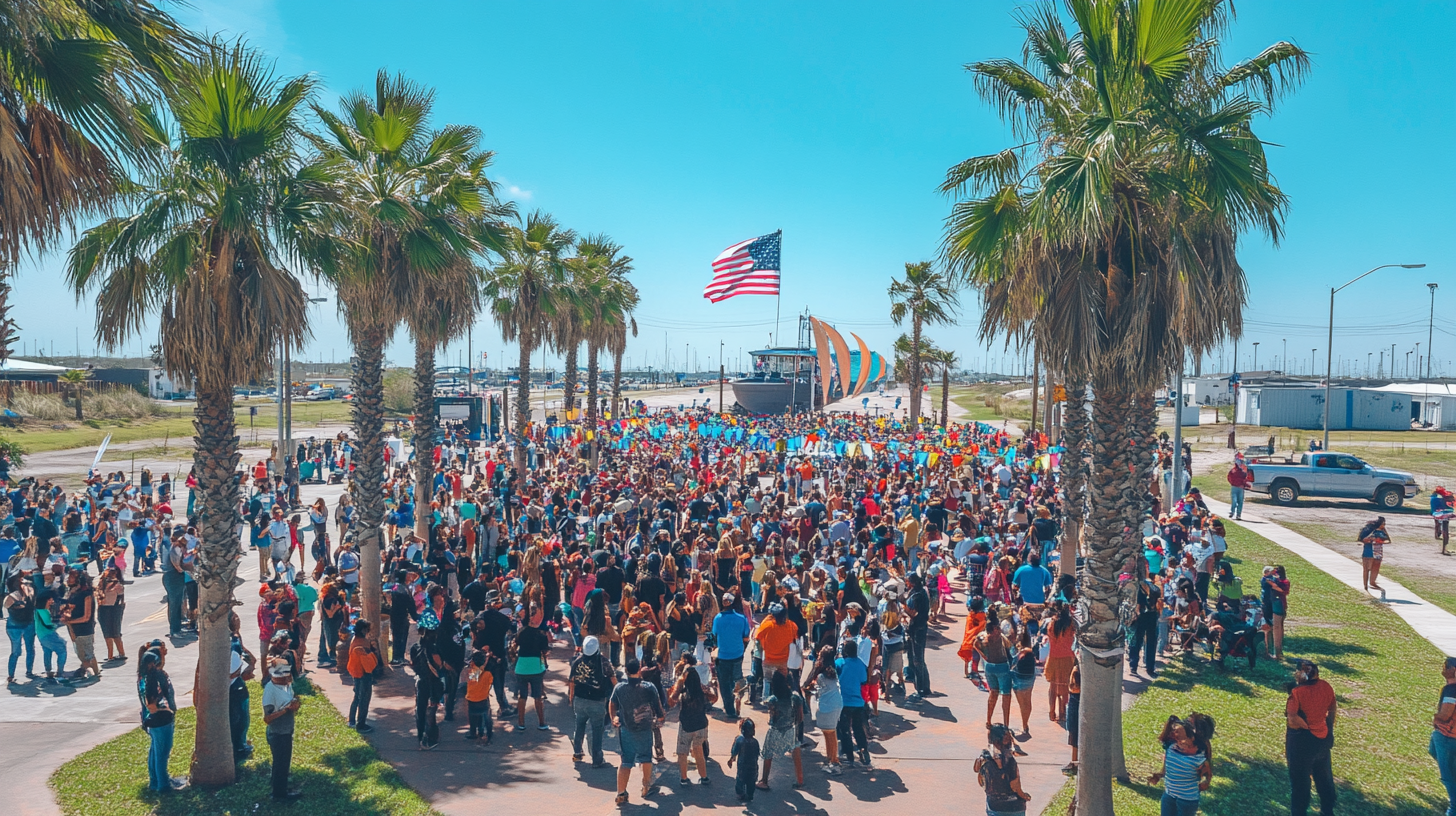**The U.S. Navy’s “Big John” Completes its Final Journey to the Rio Grande Valley**
The USS John F. Kennedy (CV-67), a conventionally powered aircraft carrier affectionately known as “Big John,” has completed its final voyage from the Philadelphia Naval Yard to the Port of Brownsville. This marks the end of a 39-year legacy during which the vessel undertook 18 vital deployments, often finding itself at the forefront of significant global events. While the Navy’s decision to retire and sell the carrier to the International Shipbreaking Limited—a Brownsville-based company—for a mere cent each may seem symbolic, it carries profound economic and historical implications for the Rio Grande Valley (RGV).
**A Storied Past on the High Seas**
Commissioned in 1968, the USS John F. Kennedy was the last conventionally powered carrier constructed for the United States Navy, initially designed to operate on nuclear power. Over its nearly four decades of service, “Big John” played pivotal roles during periods of heightened tension in the Middle East and North Africa. Its missions included critical support in Operations Anaconda, Enduring Freedom, and Iraqi Freedom. As a landmark of Cold War naval strength, the vessel’s decommission has stirred emotions and reflections among its many former crew members and admirers.
**Community Gathering to Honor a Legend**
As “Big John” made its majestic entrance into South Texas waters for the last time, thousands of spectators, including many former sailors, gathered along the shores of Brownsville to pay tribute. Among them was retired Navy veteran Marcus Klein, who shared, “This ship was my first home after boot camp. Standing here today, watching her sail into the sunset, brings a flood of memories. It’s bittersweet but fitting that she ends her voyage in a community like ours, with deep ties to naval history and maritime industry.”
The procession, filled with nostalgia and respect, underscored the strong emotional connection that many feel with the carrier. The Valley’s rich naval history, coupled with the multi-generational ties of numerous local residents whose families have served in the U.S. military, amplifies this sentiment.
**Economic and Cultural Impact on the RGV**
For the Rio Grande Valley, “Big John’s” final journey is more than a historical footnote—it signifies a blend of economic opportunity and community reflection. As International Shipbreaking Limited prepares to dismantle the carrier, the local economy is poised to benefit from job creation in the shipbreaking industry, further solidifying the region’s reputation as a leader in maritime recycling.
David Gonzalez, a Brownsville economic development officer, highlighted this potential, stating, “Our community stands to gain substantially from projects like this, which not only represent a substantial sector of local employment but also bring an influx of skilled trade work. It highlights the Valley’s significance as a pivotal player in specialized maritime activities.”
**Challenges and Considerations**
Despite the economic benefits, the sale and scrapping of such iconic vessels raise critical discussions about preserving naval history. Efforts to transform “Big John” and its sister ship, the USS Kitty Hawk, into museum ships fell short due to high costs and security concerns. Disclosure risks posed by the ship’s internal configurations comparable to modern carriers like the Nimitz and Ford classes influenced the Navy’s decision to forgo preservation.
“There’s always a sense of loss in relegating ships with such rich histories to dismantling,” says historian Dr. Carlos Herrera from the University of Texas Rio Grande Valley. “However, the complexities in terms of the upkeep, funding, and security of floating museums are undeniable challenges.”
**Future Bearings and Opportunities**
Looking ahead, the legacy of the USS John F. Kennedy will transition to the skies as the Navy readies the new USS John F. Kennedy (CVN-79), a next-generation Gerald R. Ford-class supercarrier. This development reflects the Navy’s strategic shift towards embracing cutting-edge technology and sustainability.
As the Valley navigates the ramifications of hosting “Big John’s” final chapter, community leaders and historians alike are called to reflect on the intricate tapestry of legacy, modernization, and economic resilience showcased by events like these. Integral to this reflection is ensuring that future shipbreaking projects continue to be handled sustainably and ethically, preserving the Valley’s ecological and social well-being.
**A Moment of Reflection and Progress**
For residents of the Rio Grande Valley, watching the mighty USS John F. Kennedy glide into Brownsville waters is both a moment of closure and a harbinger of renewal. The final destination of “Big John” serves as a testament to the region’s enduring connection with naval history, providing a lens through which new generations can appreciate the profound blend of heritage and innovation.
As the Valley continues to grow and evolve, opportunities tied to its maritime prowess remain essential in shaping its future. In commemorating the carrier’s storied past, the RGV honors its continued role in bridging the historic with the contemporary, ensuring that the spirit of exploration and service lives on.







